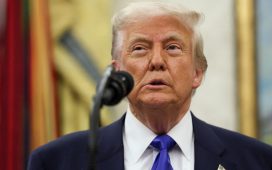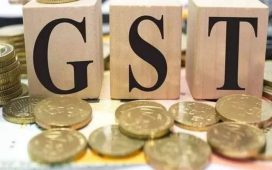In the past, trouble would come individually — not as a pair. When food, fuel and fertilizer skyrocketed between 2002 and 2008, the US currency was cheap and abundant. When the greenback surged between 2011 and 2020, basic ingredients became less costly. Their movement in the opposite direction tended to offset the overall negative impact on output and prices. But when the two soared in tandem in 2021 and 2022, stagflation risks increased in commodity-importing developing economies, new research by the Bank for International Settlements has shown.
Luckily for India, a part of this two-year period coincided with a post-Covid-19 reopening. Self-sufficiency in food production, a sizeable foreign-exchange war chest and a vast software exports industry helped cushion the commodity and hard-currency shortages that, in various degrees, hobbled the region’s frontier markets: Sri Lanka, Pakistan and Bangladesh.
The pent-up demand of the urban professional class helped sustain growth — until the expansion in gross domestic product slowed to 4.4% in the December quarter with private consumption increasing by just 2.1% from a year earlier, down from 8.8% in the previous three months. Such a sharp deceleration in spending around major Hindu festivals is worrying. With investments also starting to slow from the high growth witnessed earlier during this fiscal year, the outlook for domestic demand has turned weak.
Not much help is expected from the global economy. Financial conditions are tight almost everywhere, and demand tepid. There’s no end in sight to Russia’s war in Ukraine. Even China, emerging from its long isolation, has set a modest annual growth target of around 5% , though the one positive side-effect of that may be that commodity prices won’t run away again. The Federal Reserve is far from declaring victory on inflation, and some European economies, such as Germany and Italy, are forecast to tip into recession.
Tremors in other emerging markets are also causing a ripple effect, with a highly disruptive currency ban in Nigeria contributing to likely production cuts at Bajaj Auto Ltd.’s Indian factories. Export volumes at the motorcycle maker hit a 30-month low in January. Nomura Holdings Inc. is predicting that GDP in the world’s fifth-biggest economy will expand 5.3% in the financial year that starts on April 1, way below the central bank’s 6.4% forecast. “Overall, India’s growth drivers are slowly fizzling,” its economists Sonal Varma and Aurodeep Nandi wrote.
Money is tight at home, too. To tame persistent core inflation, the Reserve Bank of India has wrung dry the pandemic-era excess liquidity and raised its benchmark interest rate by 250 basis points. It might have to serve up another 25-basis-point increase next month, taking the terminal rate towards 6.75%, way higher than what was expected when the RBI began its campaign last May.Borrowing costs have risen to a point where higher mortgage payments could be affecting household budgets. At least one external member of the RBI’s monetary-policy committee is uncomfortable: Economic growth appears to be “very fragile,” says Jayanth Rama Varma, a finance professor at the Indian Institute of Management in Ahmedabad.
The government of Prime Minister Narendra Modi will have to rely on public spending to prevent this fragile growth from cracking. But it faces resource constraints. For one thing, slower GDP expansion will also mean muted tax collections. New Delhi is hoping to save money on food and fertilizer subsidies. Yet, climate change is an additional complication, with heat waves threatening what’s expected to be a record wheat harvest. Consumer-staple firms are betting on an improvement in farm incomes and rural demand. If that fails to materialize, farmers will be less than receptive to higher market rates for fertilizers.
Lunging for bigger budget deficits when investors expect fiscal consolidation won’t fly. Nor is it realistic to hope New Delhi will raise resources by stepping up privatization in a pre-election year. The $130 billion stock-market scandal involving the infrastructure tycoon Gautam Adani — even though the businessman claims to have derived no undue benefits from his proximity to Modi — has put the government’s commercial decisions under additional scrutiny. It has also left a big buyer of state assets out in the cold.
While Apple Inc.’s vendors are making or contemplating investments in India — primarily to reduce the risk of getting caught in the vortex of deteriorating US-China relations — there are few discernible signs, yet, of $24 billion in five-year government incentives making headway, either in creating factory jobs, or reviving the dwindling importance of manufacturing in the economy. In the northern state of Uttar Pradesh, which has a population rivaling Brazil, the workforce participation of males aged 20 to 24 years fell to a little over 34% in the last quarter of 2022, from nearly 66% before Covid-19. For female youths, the participation rate was only 3.4%, according to Mahesh Vyas of CMIE, a think tank.
In states where they’re in power, opposition parties are fanning the insecurity of the less affluent by signing up government workers to an old, defined-benefit pension plan, reversing two decades of reforms and introducing a vulnerability to India’s weak fiscal foundations. The stagflation risks — heightened by the co-movement of commodity prices and the dollar over the past two years — may not have had the same deleterious impact on India as its smaller neighbors. But they haven’t exactly left 1.4 billion people unscathed. Now that reopening is in the rear-view mirror, it may be time to come up with a credible plan to reverse the damage.











